anyone have milgard quiet line series for sound control??
I came across a list where Milgard was rated 4th. I'm need some vinyl replacement windows that I'll need sound control and saw they have a line called Quiet Line Series 7120. Does anyone believe their claims of drastic noise reduction? We have neighbor A/C that cycles on/off constantly and besides reversing the side that the sliding window opens and closes on,,,I really need sound control. I've been looking at Simonton replacement windows but they have no such animal that I'm aware of. Anderson and Pella after reading things on this forum, I'm leery of.
What say you all on the quietness factor of vinyl replacement windows? Do they help at all since we just have single pane windows from 1987. Not all windows in my home need the quiet ones, just the bedroom windows I'm thinking. Thanks.
Comments (19)
Windows on Washington Ltd
15 years agolast modified: 9 years agoVery little soundproofing in a plain dual pane set up of standard glazing thicknesses.
If you went with offset thicknesses (i.e. laminated glass) that would help considerably.
As far as the Milgard Quiet Line windows, I don't have any of them in my home, however, I have several customers that have raved about them. One very light sleeper is sleeping like a baby now because of the noise abatement.
mcsbldr
15 years agolast modified: 9 years agoThe acoustical performance of windows and doors is influenced, not only by the glass, but also by the framing members and construction of the window assembly. If one were looking to achieve low sound transmission in a window or door, it would be just as important to review Design Pressure rating performance testing, which includes air infiltration specifications. Low air infiltration will also result in low sound transmission. Additionally, high DP ratings generally may be the result of solid construction that includes construction materials of greater mass. I would suggest that a wood window would provide greater noise abatement than that of a vinyl window, due to the greater mass found in a solid wood window.
In regards to glass, Sound Transmission Class (STC) measured in decibels (dB) is the standard method for rating sound attenuation characteristics of glass products and window assemblies. The higher the STC rating, the higher the sound attentuation properties of a window. A typical insulated glass clad wood window has a STC rating of approximately 30. A specifically designed "high STC rated" clad wood window can achieve a rating close to 40. The difference between a rating of 30 and 40 is generally made by changes in the glass product. As an example, windows of this higher rating have been used in airport traffic towers, so a 10 point difference amounts to substancial sound abatement.
The following changes to glass properties are used to achieve greater STC ratings. The associated benefits measured in decibels are noted in parenthesis.
1. Increase air space thickness between glass lites (+2-3dB)
2. Change glass thickness (+2-5dB)
3. Mismatch glass thickness (+1dB)
4. Add PVB laminates (+4dB)
5. Increase PVB thickness (+2dB)
6. Mismatch glass in laminate (+2dB)
7. Replace air with gas mixture (+3dB)Windows on Washington Ltd
15 years agolast modified: 9 years agoDo me a favor mcsbldr and stop recommending wood windows every chance that you can post. You are doing this in a thread when the person specifically asked about a given product and you are recommending another product.
The "high" rated STC windows that you are talking about, "can achieve a rating of close to 40", doesn't even qualify as an STC window. Windows that are assigned an STC classification and considered soundproof start at STC 41.
The wood window that you state has an STC rating of 30 is getting your exactly nothing over a well built vinyl window in a standard packaging. Most well built vinyl windows are in the high 20's low 30's STC ratings without offset glazing or laminated glass.
I am not vinyl window biased, however, you obviously are because you take every opportunity to post about wood windows. You typically do this and then don't post back once you are challenged and your arguments exposed as counterfeit.
BTW, the STC Milgard windows that I was referencing were an STC of 46.
mcsbldr
15 years agolast modified: 9 years agohttp://www.milgard.com/_doc/products/shared/quietline-hs-brochure.pdf
A quick search provided the specifications for the plastic window noted in the above post. One should note that this product is a triple pane window unit. The values noted in our previous post regarding wood windows are for a standard dual pane insulating glass window. Obviously, if triple pane glass is utilized in the wood window calculations, the STC values would increase substancially.
We might suggest that the initial post highlights a topic regarding sound transmission, regardless of window type. It may be practical to help educate a consumer on the potential for achieving high STC ratings in various products. Our points stated above may help a consumer make a more educated decision. It is a fact that more mass equals lower sound transmission, whether it be aluminum, steel or wood, versus that of plastic. As noted, a 'standard' wood window achieves a STC rating of approximately 30. This is in a generic comparison to a 'standard' vinyl window that achieves a STC rating of 25. Obviously, results will vary depending on the quality or manufacturer of the wood or plastic window.
If a consumer can purchase a dual pane insulated glass wood window with similar STC ratings as that of a triple pane plastic window, why would one choose to purchase the latter? Additionally, due to the expense of glass, I may make the assumption that the extra glass pane in the pastic window may drive the price up to that of the wood window with essentially equal STC ratings. It is our opinion that using less material to achieve the same result is a benefit.
Lastly, we make every effort to provide accurate information based on personal research and experience in order to promote long-lasting, durable building structures. We would never refrain from doing such in order to fulfill other's requests that seem to promote materials based on the hope of future employment security. It is unfortunate if we have not kept up to date on any rebuttals to the information we've previously posted, as we do not visit the site often.
Here is a link that might be useful: Milgard
Windows on Washington Ltd
15 years agolast modified: 9 years agoYou keep mentioning "we". Are you referring to the collective borg?
"We might suggest that the initial post highlights a topic regarding sound transmission, regardless of window type."
....really? It appears to me that the person posted something rather specific to Milgard Quiet Line windows and then referenced "vinyl" windows in their initial post. You somehow took this wanted to discuss sound transmission, regardless of windows type? Maybe my reading comprehension is a bit off but where do you get to that conclusion.
"It is a fact that more mass equals lower sound transmission, whether it be aluminum, steel or wood, versus that of plastic. As noted, a 'standard' wood window achieves a STC rating of approximately 30. This is in a generic comparison to a 'standard' vinyl window that achieves a STC rating of 25."
While your "facts" are correct regarding mass equaling lower transmission, you very random and inaccurate facts regarding STC ratings are just that, inaccurate. The Alside Excalibur (often regarded as a mid-low end vinyl replacement with below average air infiltration numbers) tests out an STC of 27 where your typical clad window tests out at approximately 30. Seeing as most people have financial considerations, would you like to provide the STC data on that wood clad window along with the price of that unit. We can compare it to the price and STC of the "plastic" window.
A wood window with an STC of "close to" 40 is utilizing at minimum offset glazing and more likely laminated glass. I can better that number in a Milgard Quiet line without the use of laminated glass (usually the most expensive portion of an STC window) and achieve a true STC window. I imagine that the price comparison between a true STC window (41+) is more favorable for Milgard when compared to a wood clad window with laminated glass.
Why is it then that you "accurate" information is always contrarion to vinyl?
"We would never refrain from doing such in order to fulfill other's requests that seem to promote materials based on the hope of future employment security."
Lets break this down in simplest terms...someone posts a question about Milgard Quiet line windows, I post up personal customer experiences with that window, and that is "promoting materials" for job security. You post an entire thesis about wood windows being better and somehow you think that you are doing the more ethical thing by promoting wood.
I am sorry, but you/"we" are in denial. Let me know if they have any property for sale there.
oberon476
15 years agolast modified: 9 years agomcsbldr,
A couple of questions in regards to your reply to the original question...
I am curious where the numbers that you posted relating to improved sound performance in windows came from? Are they based on a control of some sort? In other words are the levels of increased sound attenuation based on improvements to a single pane window, a dual pane window, or on something else?
While what you said about "how" to improve sound attenuation performance is not incorrect, I am curious where the specific "levels" or amounts of improvement came from.
"1. Increase air space thickness between glass lites (+2-3dB)" -
What is the improvement that you quoted based on? Is it a comparison between a given width air space and a different width airspace? In which case what is the difference in width between the original and the airspace that improves performance by 2 to 3 dB?
For significant sound attenuation, it may be necessary to have an air space approaching two inches or more although lesser width airspace can make a difference as well depending on the frequency and amplitude of the unwanted sound.
"2. Change glass thickness (+2-5dB)" -
What is the original glass thickness and what is the glass thickness changed to in order to arrive at the 2 to 5 dB gain? A 5 dB gain in sound attentuation is pretty substantial.
For comparison, a single pane of 1/4" laminated glass consisting of two 1/8" lites with the plastic interlayer actually has just about as much sound blocking ability as a 1/2" lite of monolithic glass.
The monolithic glass tends to do better at mid to higher frequencies while at the lower frequencies the performance of 1/4" laminated and 1/2" monolithic tend to be about the same - as well as the overall STC rating being about the same.
"3. Mismatch glass thickness (+1dB)" -
Same as number 2, what is the control and what is the change?
As a general rule, different thickness lites in an IG configuration (for example 1/8" and 3/16") contributes more to lower frequency noise attenuation than it does to higher frequency attenuation, yet oddly, using different thickness lites does not contribute significantly to overall STC performance as well as some of the the other options mentioned such as using a wider airspace or laminated glass in the IG unit - and the wider the airspace between the lites, the more potential for limiting unwanted sound thru that space.
"4. Add PVB laminates (+4dB)" -
What thickness PVB laminate should we add? Is this improvement based on a sound control PVB or a standard PVB? Is it a Solutia, DuPont, or one of the other PVB suppliers product? Is there a difference in base performance between different products?
"5. Increase PVB thickness (+2dB)" -Increase from what thickness to what thickness in order to achieve the 2dB improvement?
Minimizing unwanted sound thru any material is determined by three things  mass, stiffness, and damping of the material. Since mass has already been addressed and since stiffness of glass can't be changed, we look at damping.
Inherently, glass has very little damping ability, but when putting a layer of a more viscous material between two of lites of glass we substantially increase the unitÂs ability to dampen sound  thus the advantage of laminated glass which just so happens to be a product that has a layer of more viscous material between two lites of glass.
However, I would still ask where your "improvement" numbers were derived?
"6. Mismatch glass in laminate (+2dB)" -
Again, from what to what?
"7. Replace air with gas mixture (+3dB)" -
What gas do you happen to have in mind? Argon and krypton gas fill provide no improvement in sound attenuation characteristics. Filling the airspace with sulfer hexafloride (SF6) does improve window sound performance but at the cost of a lower energy performance. And can you name a window company that will provide an IG filled with SF6 gas infill?
You stated in your last post that "Obviously, if triple pane glass is utilized in the wood window calculations, the STC values would increase substancially". What are you basing that statement based on?
In fact, a triple pane with the same thickness of glass and the same overall airspace as a dual pane will have the same overall STC value.
And since you mentioned STC, I would add that while an STC rating is an average of an objectÂs ability to attenuate sound across a fixed frequency spectrum of approximately 100hz-5000hz. An STC average does not provide specific frequency-deadening information which may be what is needed if you want to block a specific type of unwanted noise  for example traffic noise  and while the attenuation characteristics of certain products at particular frequencies do exist, they are often not generally available to the consumer.
Sound Transmission Class is a laboratory rating based on some very specific criteria within a very specific frequency range. STC was designed to test the frequency range where the human voice will be the predominant consideration.
Unfortunately, this does tend to minimize the effectiveness of STC as a tool for helping to block sound outside of that range.
While using STC to compare the sound-blocking ability of different window styles or brands is certainly not a bad idea since, generally speaking, a window with an STC of 40 should outperform a window with an STC of 35  STC is sort of like mileage ratings on a new car  not always as useful as one might hope and that 40 versus 35 is for an overall rating  it does not say which of those products would perform best at specific frequencies  blocking traffic noise for an example.
STC is a rating that is independent of the conditions under which the window will be used  meaning that it does not take into account the actual field conditions of the assembly. These conditions might include background noise, window area, even the level of sensitivity to noise of the occupants. Noise reduction requirements are affected by these conditions so that windows with the same STC might have very different NR requirements when used in different situations.
mcsbldr
15 years agolast modified: 9 years agoOberon,
Thank you for the inquisitive response to the specification data regarding acoustical performance of windows. As requested, please find additional and more specific information regarding glass values noted below. The following data provides rough estimates on the STC rating of various glass products. It should be noted that these are only estimates, and the final STC rating of a window assembly could vary based on the acoustical performance of the framing members and the construction of a given window assembly.Base line unit construction: 3.0mm Glass/6.5mm Airspace/3.0mm Glass
1. Increase air space thickness between glass lites (+2 to +3dB) -ex. 6.5mm to 13.0mm = +2dB / 13.0mm to 25.0mm = +3dB
2. Change glass thickness (+2 to +5dB) -ex. 3.0mm to 6.0mm (one lite) = +2dB / 6.0mm to 12.0mm (both lites) = +5dB
3. Mismatch glass thickness (+1dB) -ex. 2:1 to 3:1
4. Add PVB laminates (+4dB) -ex. 1 at 0.8mm
5. Increase PVB thickness (+2dB) -ex. 0.8mm to 1.5mm
6. Mismatch glass in laminate (+2dB) -ex. 2:1 to 3:1 per mismatch
7. Replace air with gas mixture (+3dB) -ex. 15-20% SF6-Air or Argon mixture
The generalized comment made regarding the triple glazed wood window theorized that utilizing a traditional dual pane IG unit in combination with an inboard storm panel may dramatically enhance the acoustical properties of the given wood window in much the same manner as it has for the Milgard window as shown in the link attached to a previous post. Specifically, a 3/4" IG unit with a storm panel mounted inboard and an air space of approximately 3", as shown in the Milgard detail sheet.
The additional comments you posted are very informative. One other item that should be highly considered when reviewing acoustical propoerties of windows is the STC rating of the wall system into which a given window assembly will be placed. A typical 2x4 stud framed wall with batt insulation and GWB on each side may provide a maximum STC rating of 39, whereas an ICF wall with GWB on each side exceeding 11" widths may provide STC ratings of 51 and higher. Therefore, the consideration emphasized here should be whether to purchase fenestration products that may dramatically exceed the acoustic properties of the surrounding wall structure. Unless measures are taken to address the noted wall system, it may not be prudent to fill 10% of the wall area with a STC 40+ window when the other 90% of wall area provides a 35-39 rating.
shaqd
15 years agolast modified: 9 years agoBoy, the fur is really flying here!!!!
Everyone makes good points, though. Can't we all get along...
tcjohnsson
15 years agolast modified: 9 years agoGreat posts. I'm learning more and more every day. I still haven't decided what window system to use. I am even contemplating a dual window system - one standard double pane window (1/8", 3/8" space, 1/8") on top of another 1/4" laminated single pane window. Basically, I'm duplicating what the "soundproof window" guys are doing. Am I crazy? I have no idea what the end result would be (STC or OITC) for such a set up but I can only imagine it would be better than any other single-framed window out there. But again, I'm only imagining.
The other choice would be the triple pane Quietline product from Milgard.
The downside to having two windows is that it's kind of weird... and a bit cumbersome to open. But they are going in the bedrooms and these windows won't open very often (property is RIGHT NEXT to a freeway).
The upside is a potentially much higher STC or OITC rating. And better insulation from the extreme heat (property is in Hawaii). And I guess I can consider it to be more secure than a single window system.
Is it crazy to go with a dual window setup? This is new construction, BTW.
And while not in the right forum, I made a decision to go with a "ventilated facade" system using EPDM and wood furring strips placed between the wall membrane and concrete panels (hardipanel). This allows a 3/4" airspace between the concrete panel and the plywood on top of the studs. Air spaces will be provided to ventilate this 3/4" airspace. I'm thinking that the use of EPDM rubber between the plywood and the concrete will help to increase the STC rating of the wall. But then again... big fat assumptions here.
piper101
Original Author15 years agolast modified: 9 years agoVery good information. I was out of town and just checking back now. Thank you again for something to be asking of these window companies and their 'ratings'.
huffy_henry
15 years agolast modified: 9 years agotcjohnson, I'm in the same boat. I'm looking for a solution to bass coming in from passing car steres and a little nightclub that's about 300 feet away. It's never loud enough to rumble the house, but just enough to be annoying and keep you from sleeping (even with a white noise machine).
In any case, I'm trying to decide between Mon-Ray interior storm windows (aluminum frame, 1/4" laminated glass) and the Milgard Quiet-Line double-hung window. The Milgards would look better, but I want to go with what will help most with the low-frequency noise.
Any advice out there?
tcjohnsson
15 years agolast modified: 9 years agoI am looking to install about a dozen or so "XX" dual slider windows in tandem.
Basically, I plan on putting one window on top of another. This is similar to what the company "Soundproof Windows" does, except I'm ordering standard windows and having my contractor install two in tandem.
Hopefully Oberon can chime in on this one. I did hire an acoustical engineer... however he is not aware of the STC rating for these unique XX dual slider windows. Basically, it's a horizontal slider where both windows (left and right) slide independently. I need these because I have planter boxes directly outside the windows and I want access to the entire section from inside the house. The planter boxes are not accessible from the outside because they are either two or three stories up (homes are three stories tall).
Does anyone know if the XX dual slider is appropriate in achieving a high STC rating? My goal is 50 STC with these two windows in tandem:
First window (outside)
Dual pane 1/4" lam, 5/8" air space, 1/8" plate glassSecond window (inside)
Single pane 3/16" lamNote that there is about 2 1/2" of airspace between the two sliding windows. So technically, when both windows are closed, I have created a "triple pane" window with a 5/8" airspace and a 2 1/2" airspace. And 3 varying window thicknesses - 1/8", 3/16" and 1/4". Total mass in glass is 9/16" and this doesn't include the two laminate films between two panes which I assume add about 1/8" more.
And the reason why I need a ridiculously high 50 STC is because these are bedrooms and the property is located right next to a highway. Any advice is appreciated!
milgardwatch
15 years agolast modified: 9 years agoMy username admittedly may show a bias, however be very careful with the Quietline. I was an Outside rep for Milgard for 7 years. Here's what you need to be aware of on the Quietline:
1) astronomical pricing
2) damage. These windows are extremely heavy and get damaged a LOT during transit. Most people wouldn't even know until after they were installed and the first rain came.
3) They are triple pane and have FOUR sashes per window. You open it, then open it again, and then have a big ugly screen.
4) Be careful about egress issues. These are bulky and eat up more space than most contractors are initially aware of.
I would recommend either offsetting the glass like some others have recommended or checking out a company called Quiet Solutions out of Sunnyvale, CA. Excellent performance, reasonable price. (no, I don't work for them!)
mikey99
13 years agolast modified: 9 years agopiper101, did you ever decide on a replacement window
that would reduce the sound levels from outside ?I'm facing the same situation, a neighbor with a very
loud A/C unit, that cycles 5 min on 5 min off ALL
night long. All the noise appears to be coming through
the two windows in our bedroom, so I'm planning to replace
those two windows to reduce the sound levels.Windows on Washington Ltd
13 years agolast modified: 9 years agoDepending on wall thickness, you can actually install another window inside the jambs and create very much the same situation that you might with and STC window.
You can also look into a storm window with laminated glass.
Either of those situations may get you right where you need to be in terms of sound control.
rjfrost_cox_net
13 years agolast modified: 9 years agoI actually purchased the Milgard quiet line series and while they have done wonders for my energy bill their sound effectiveness is negated by the walls themselves as posted by one of the people discussed. On the plus side, it is much quieter than the single pane and I did get a tax write off as they truly are energy efficient. Also, as they have several locks on each window it makes breaking into my home by window a little more problematic. I'm not saying impossible, if someone wants in they will get in. I do have a issue with the comment of "ugly screen" as I don't believe the screens are that ugly and it's a lot easier to clean each year with the screens their that you can take off than not. Would I do it all over again for the price? No, probably not, but this is my retirement home and I also wanted something that would last for the rest of my life and these windows, which are heavy, and no the rain does not come through, are very, very nice. They have paid for themselves by the cost savings in electricity bills. I grant that the dual pane would also pay for itself sooner, but you wouldn't have the security factor.
rono93_hotmail_com
13 years agolast modified: 9 years agoI just got the quiet line installed in my house, which sits on the corner of a major intersection. These windows are amazing. They replaced a standard dual pane window and eliminated about 90-95% of the noise. Would highly suggest if you are looking to block sound. FYI - mine have an STC rating of 47. They are tripple pane, glass if offset and laminated.
DEFINITELY worth the investment!!
Windows on Washington Ltd
13 years agolast modified: 9 years agoThe happiest customer I ever had was a woman that was a very light sleeper.
I called her the morning after the installation and you would have though that I hung the moon and stars.
Nothing like a good nights sleep to make a happy customer.





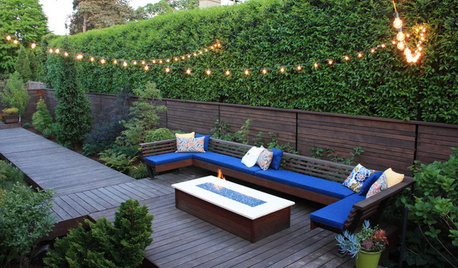
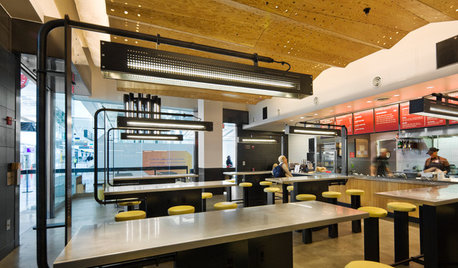

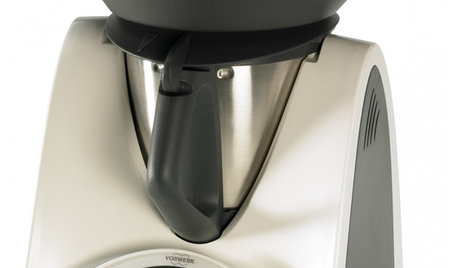
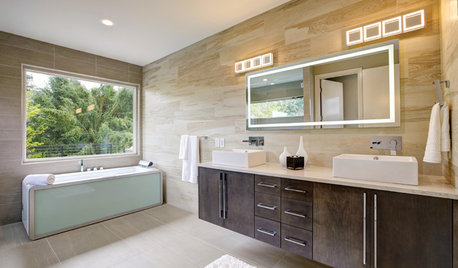








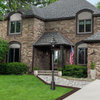
teedup1